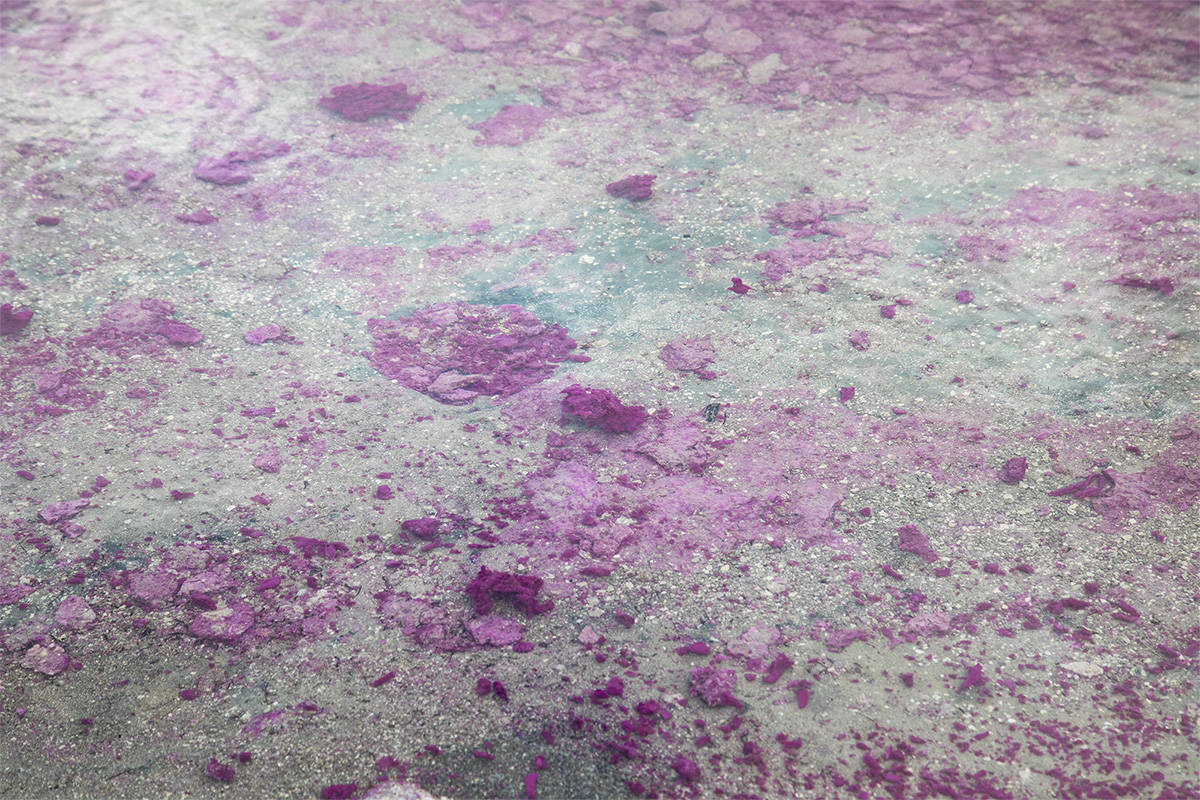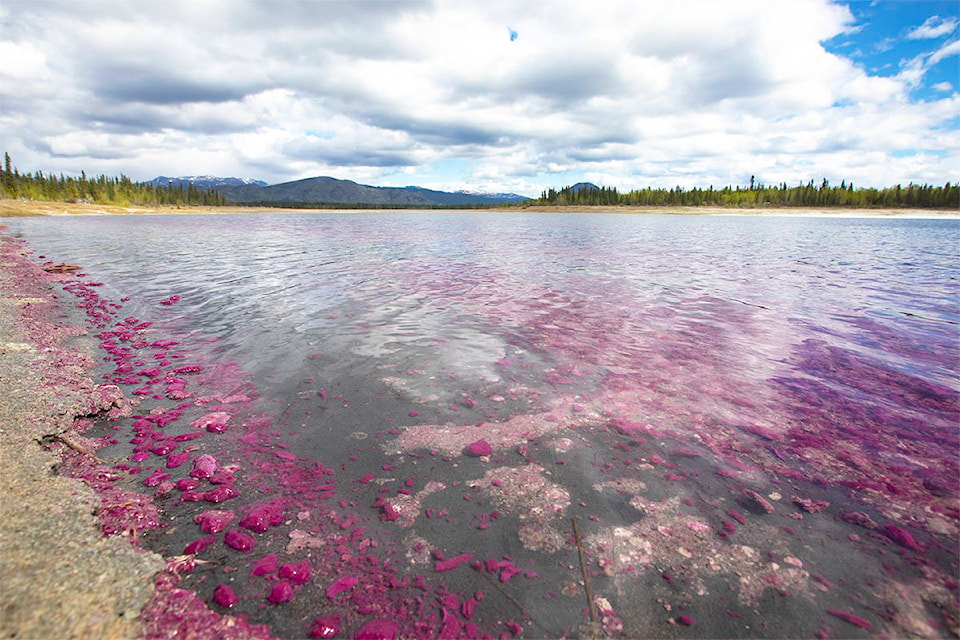Less than an hour’s drive from Whitehorse and a stone’s throw from the Takhini bridge is a sight seasoned biologists say is found nowhere else in the Yukon — a lake with a vivid purple rim.
If a curious adventurer were to step closer to the shore, they’d see the purple isn’t an attribute of the water itself, per se, nor is it a scene achievable only via photo manipulation.
Instead, it’s the result of countless purple blobby masses, some roughly the size of a dime while others approach soccer-ball territory, that drift lazily along the lakebed.
The natural phenomenon owes its existence to the contents of the blobs: purple sulphur bacteria, from the Thiocapsa genus in particular, which just so happen to thrive in the conditions present at Two Horsemen Lake, near the Takhini Salt Flats.
Thiocapsa are a fairly common genus of bacteria, according to J. Thomas Beatty, a professor at the University of British Columbia’s Department of Microbiology and Immunology. He’s previously examined a sample of the Yukon’s purple bacteria; in an interview June 11, he described them as appearing to be fairly normal, “run-of-the-mill Thiocapsa,” although he noted that “zero” research has been done on the Yukon population, specifically.
Generally speaking, purple bacteria are present in most lakes though typically only in low abundance, with larger numbers found in saline lakes.
“I would say, saline lake, more often than not, they will be there in abundance to detect readily, so you know, they’re fairly common, not totally unusual,” he said.
“What’s unusual is to get enough that you can see from the shoreline, right? And just see purple in the water or on the bottom, just off the edge, that’s fairly unusual.”
Two Horsemen Lake is the only place in the Yukon to date where the purple bacteria have been found to such a degree.
The key to getting the purple bacteria to grow in large abundance, Beatty said, is the presence of sulphate salts, which the Takhini salt flats area happens to have plenty of thanks in part to being situated on top of an ancient lake bed (mirabilite and thenardite are particularly abundant).
Sulphate salts are important because, although the purple bacteria don’t use them directly, they have friends who do — sulphate-reducing bacteria, which reside in the sediments of lake beds and consume organic material. As they eat, the sulphate-reducing bacteria convert sulphates into sulphides, releasing them as a waste product.
The purple bacteria, like plants, survive off photosynthesis, and get their colour from pigments that help facilitate that process. They also require sulphides in order to photosynthesize and take advantage of the waste created by the sulphate-reducing bacteria; in turn, they convert the sulphides back into sulphates.
“So you have a cycle — sulphate-reducing bacteria converting sulphate to sulphide, and the purple bacteria converting sulphide to sulphate, so there’s this little sulphur cycle that goes on between them,” Beatty said, adding that, when the purple bacteria die, their cells decompose and become organic matter for the sulphate-reducing bacteria to feast on.
While this cycle happens most efficiently in the 25 to 30 C range, it can also take place at colder temperatures, with the speed of the chemical reactions slowing down as the temperature drops.
“Cold is not too much of a problem in terms of a population of cells, it’s just that their metabolic activities kind of grind to halt as you get down close to zero,” Beatty said, explaining that, at that temperature, “any organism would probably be in a state of suspended animation.”
The purple bacteria will tolerate freezing to a certain degree, with some likely to die off as the temperatures plummet to -20 C and below. However, come springtime, there will typically be enough survivors to “persist and reestablish the population” once temperatures start creeping up above freezing again.
As for why the purple bacteria clump together, Beatty said the reasons aren’t clear; the only thing that’s known for sure so far is that when sulphide concentrations are high, the bacteria are happy and stay dispersed, but when concentrations are low, they tend to “get sticky” and aggregate.
It’s also known that high concentrations of oxygen and light are toxic to purple bacteria; Beatty said he speculates that when the bacteria find themselves in those conditions, they lump together to shield at least some of the cells from the light and oxygen, as the centre of a blob would be dark and anaerobic.
And although the word “bacteria” may be off-putting to some, Beatty said the purple bacteria are harmless to humans and wildlife; if anything, they’re beneficial since they’re consuming sulphides before they can breech the surface of the lake, where they would “stink up the air.”
They would also pose no threat should someone somehow feel compelled to eat a blob or two; they wouldn’t survive in the human body, and have been known to be consumed by other creatures to no apparent ill effect.
“In fact,” Beatty said, “there was a guy in Japan who was growing them, sort of like, freeze-drying them into a powder and then he’d mix it in with chicken feed and feed the chickens and the yolks had a … more vivid orange-red colour.”
Contact Jackie Hong at jackie.hong@yukon-news.com

